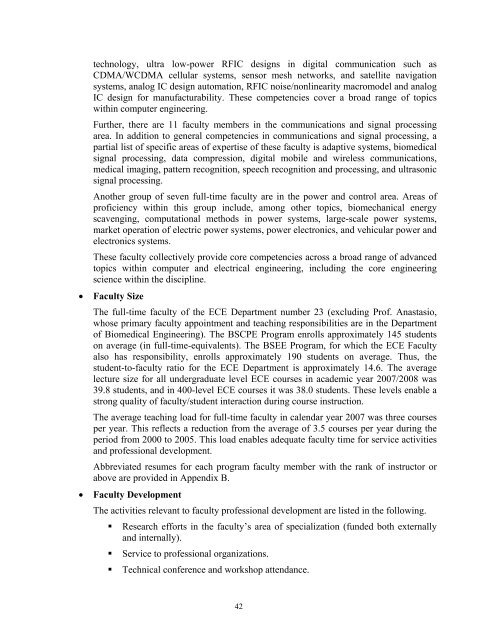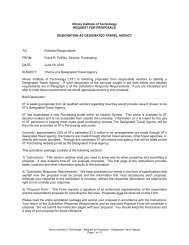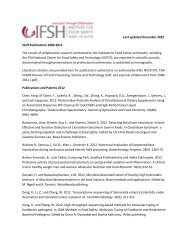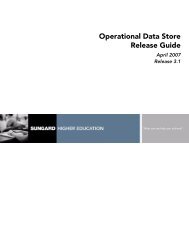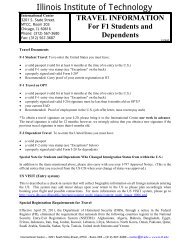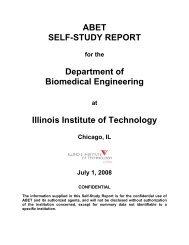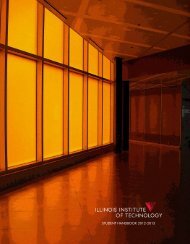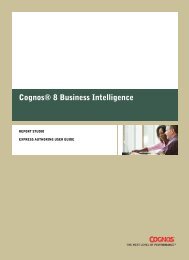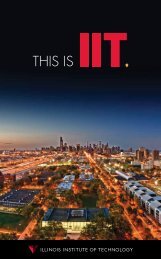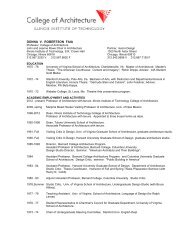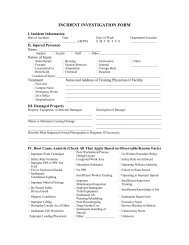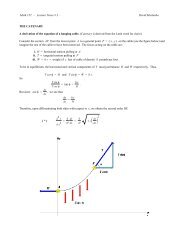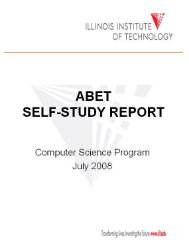IIT BSCPE Self Study 2008 - Illinois Institute of Technology
IIT BSCPE Self Study 2008 - Illinois Institute of Technology
IIT BSCPE Self Study 2008 - Illinois Institute of Technology
You also want an ePaper? Increase the reach of your titles
YUMPU automatically turns print PDFs into web optimized ePapers that Google loves.
technology, ultra low-power RFIC designs in digital communication such as<br />
CDMA/WCDMA cellular systems, sensor mesh networks, and satellite navigation<br />
systems, analog IC design automation, RFIC noise/nonlinearity macromodel and analog<br />
IC design for manufacturability. These competencies cover a broad range <strong>of</strong> topics<br />
within computer engineering.<br />
Further, there are 11 faculty members in the communications and signal processing<br />
area. In addition to general competencies in communications and signal processing, a<br />
partial list <strong>of</strong> specific areas <strong>of</strong> expertise <strong>of</strong> these faculty is adaptive systems, biomedical<br />
signal processing, data compression, digital mobile and wireless communications,<br />
medical imaging, pattern recognition, speech recognition and processing, and ultrasonic<br />
signal processing.<br />
Another group <strong>of</strong> seven full-time faculty are in the power and control area. Areas <strong>of</strong><br />
pr<strong>of</strong>iciency within this group include, among other topics, biomechanical energy<br />
scavenging, computational methods in power systems, large-scale power systems,<br />
market operation <strong>of</strong> electric power systems, power electronics, and vehicular power and<br />
electronics systems.<br />
These faculty collectively provide core competencies across a broad range <strong>of</strong> advanced<br />
topics within computer and electrical engineering, including the core engineering<br />
science within the discipline.<br />
• Faculty Size<br />
The full-time faculty <strong>of</strong> the ECE Department number 23 (excluding Pr<strong>of</strong>. Anastasio,<br />
whose primary faculty appointment and teaching responsibilities are in the Department<br />
<strong>of</strong> Biomedical Engineering). The <strong>BSCPE</strong> Program enrolls approximately 145 students<br />
on average (in full-time-equivalents). The BSEE Program, for which the ECE Faculty<br />
also has responsibility, enrolls approximately 190 students on average. Thus, the<br />
student-to-faculty ratio for the ECE Department is approximately 14.6. The average<br />
lecture size for all undergraduate level ECE courses in academic year 2007/<strong>2008</strong> was<br />
39.8 students, and in 400-level ECE courses it was 38.0 students. These levels enable a<br />
strong quality <strong>of</strong> faculty/student interaction during course instruction.<br />
The average teaching load for full-time faculty in calendar year 2007 was three courses<br />
per year. This reflects a reduction from the average <strong>of</strong> 3.5 courses per year during the<br />
period from 2000 to 2005. This load enables adequate faculty time for service activities<br />
and pr<strong>of</strong>essional development.<br />
Abbreviated resumes for each program faculty member with the rank <strong>of</strong> instructor or<br />
above are provided in Appendix B.<br />
• Faculty Development<br />
The activities relevant to faculty pr<strong>of</strong>essional development are listed in the following.<br />
• Research efforts in the faculty’s area <strong>of</strong> specialization (funded both externally<br />
and internally).<br />
• Service to pr<strong>of</strong>essional organizations.<br />
• Technical conference and workshop attendance.<br />
42


